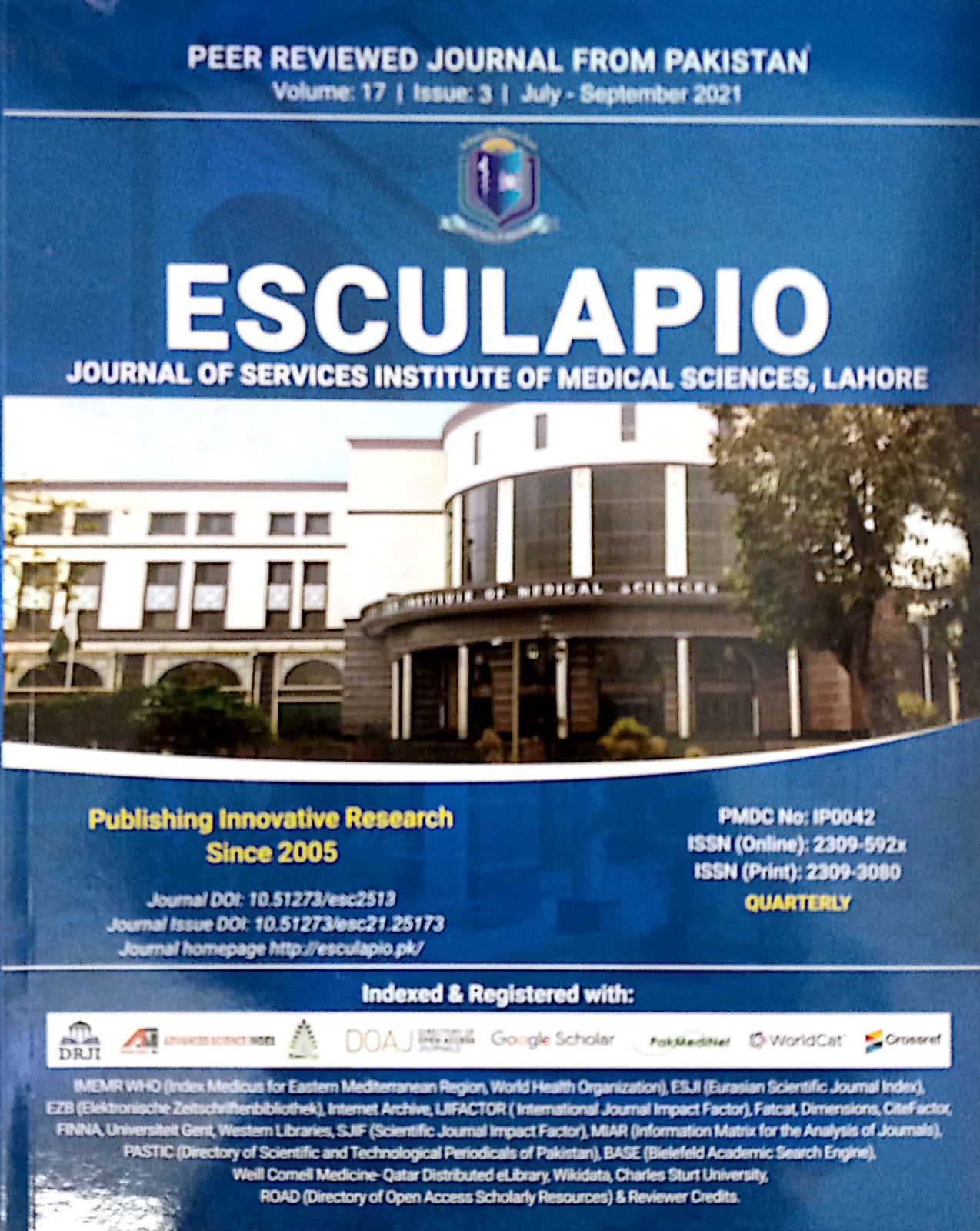Observation of Efficiencies of Different Off-loading Methods in Patients with Diabetes Mellitus and Forefoot Ulceration
DOI:
https://doi.org/10.51273/esc21.251734Keywords:
Forefoot, Ulcer, Healing, Off-loading, Diabetic Foot, Total Contact Cast, ccommodative Dressings, Walking SplintsAbstract
Objective: Comparison between the groups of diabetic patients using total contact cast, accommodative dressing, a healing shoe, and a walking splint for healing of forefoot ulcers.
Methods: It is a Retrospective Study taking place in the Outdoor Department of General Surgery, Nishtar Hospital Multan, during 1st January 2020 to 15st April 2021. A total of 164 patients were included in the study. Offloading was done in patients with the help of healing shoe, accommodative dressing which was fitted in a modified surgical shoe, a total contact cast (TCC), walking splint or combined methods that were termed as others. Different variables such as age, location o the ulcer, its depth, length, width and duration along with grading of diabetic foot (Grade I=superficial ulcer, Grade II=deep ulcer, Grade III=deep to the bone ulcer) [30] were used to adjust the overall healing time of the ulcer. Categorical variables were assessed by calculating their frequency and percentage while quantitative variables were assessed by calculating their mean and standard deviation. Chi square test was applied to
assess the correlation among different variables. A P value of less than or equal to 0.05 was considered as statistically significant.
Results: Mean healing time was 33.84 ± 14.82 days in Total contact cast group; 26.89 ± 11.05 days in Accommodative dressing group; 32.17 ± 9.06 days in Healing shoes group; 39.96±13.06 days in Walking splint group and 41.54 ± 13.15 days in other treatment modalities group, and the difference was statistically significant (p <0.001). Total 13 ulcers did not heal, one in Total contact cast group; 02 in Accommodative dressing group; 05 in Healing shoes group; 02 in Walking splint group and 03 in other treatment modalities group, and the difference was statistically insignificant (p =0.178).
Conclusion: It can be concluded from the results of the study that use of customized dressings was significantly associated with decreased healing time in forefoot ulcers.
How to cite: Aziz. M., Ishfaq M., Rehman U. J., Malik I.Z., Javed K. M., Qureshi H. K. Observation of Efficiencies of Different Off- loading Methods in Patients with Diabetes Mellitus and Forefoot Ulceration. Esculapio 2021;17(03):










